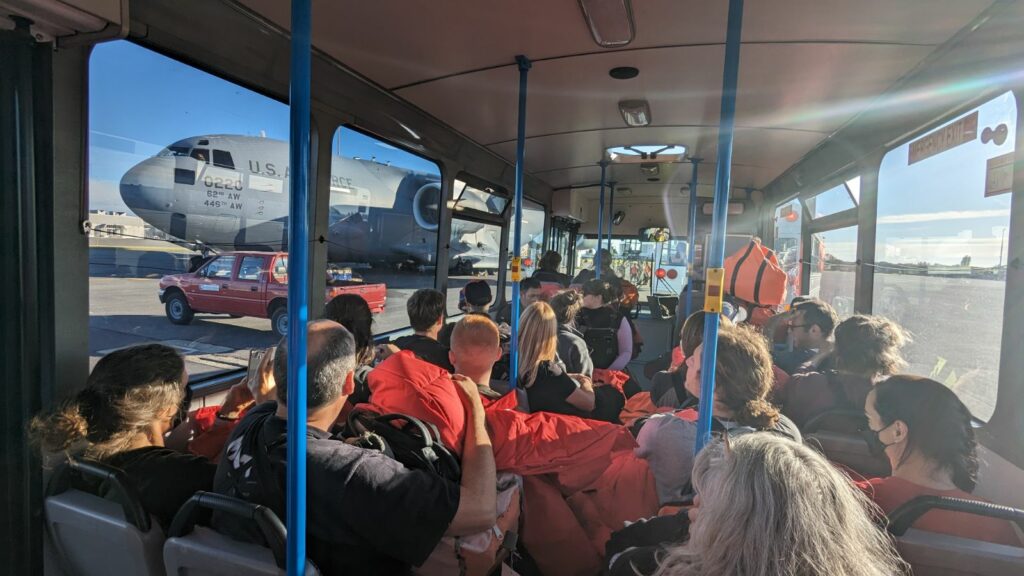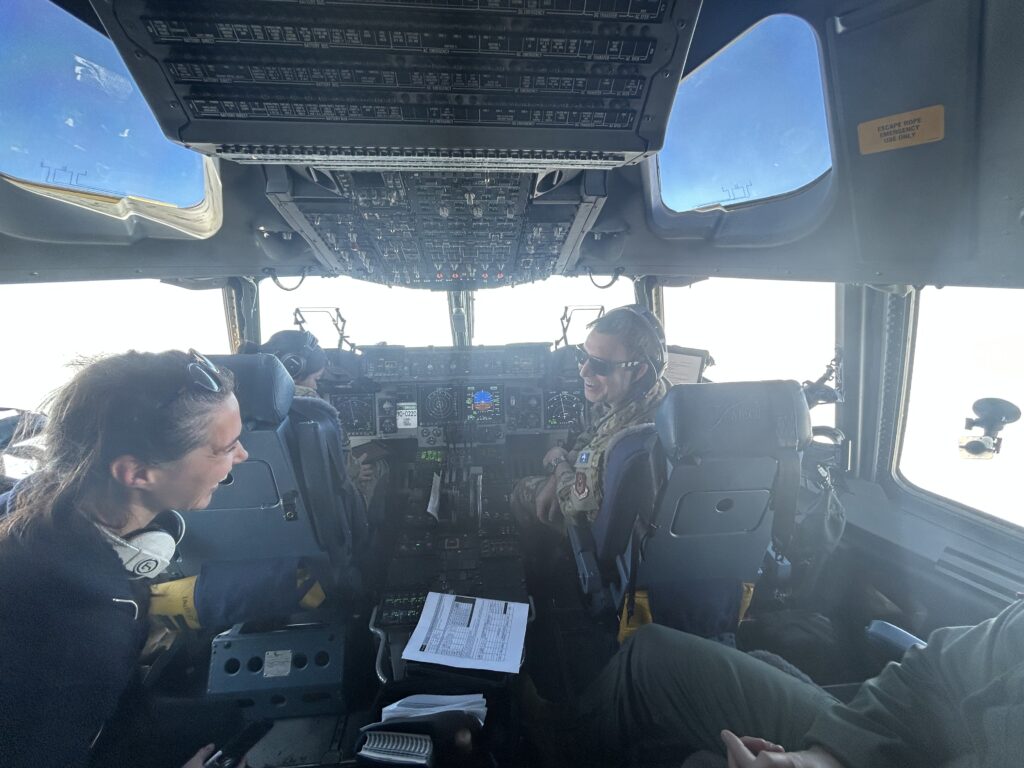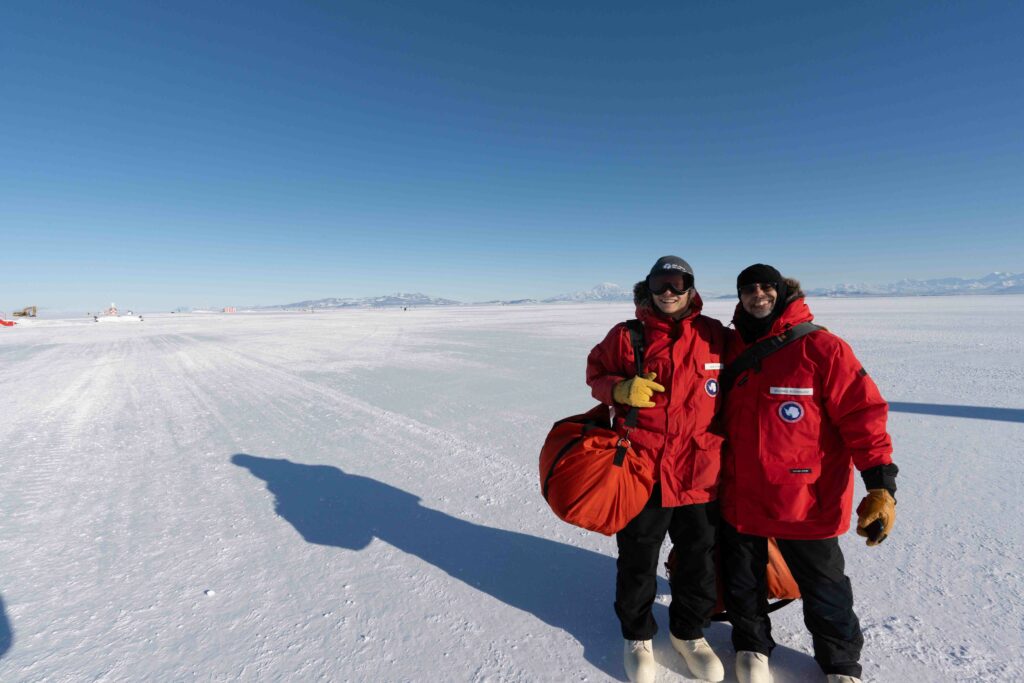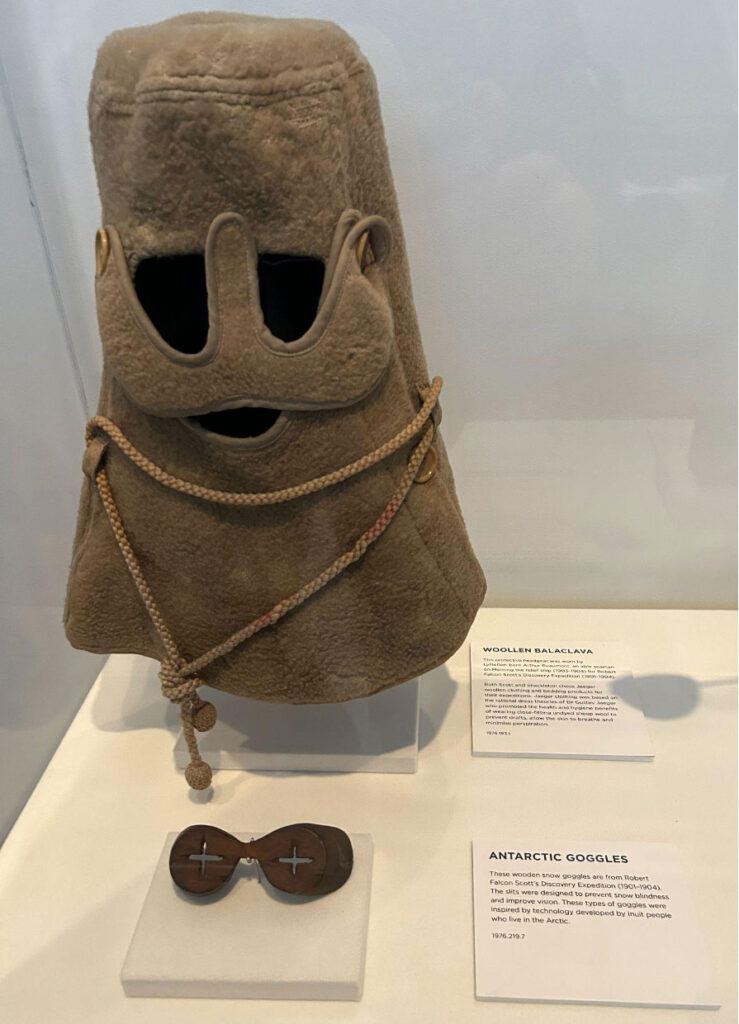(By Michael Rodriguez)
Long story short, we have been stranded in Christchurch, NZ for a week, unable to fly to Antarctica. First it was due to a broken airplane, then a multiple-day storm in Antarctica. After several false starts that included moving out of our hotel rooms with all our gear and personal belongings, we were finally on our way. Shuttles picked us up early in the morning and took us to the airport.

Waiting for our pre-dawn shuttle outside the hotel.
We retrieved our extreme cold weather clothing (ECW) that had been stored for us, received a briefing, went through security, and shlepped all our stuff onto the shuttle bus that took us to our massive C-17 transport plane.

Being delivered to our plane on the shuttle bus
Woohoo, we were finally going to Antarctica! With our ECW gear tucked under our seats, ready to be worn upon our arrival, we sat excitedly waiting for the doors to be closed. After waiting in our seats with nothing much happening for 15…30…45 minutes, and then an hour, it was announced that the flight was canceled, not because of weather conditions in Antarctica, but because of a windstorm that had moved into Christchurch! Back to the shuttle bus and to a new hotel where we would disappointedly spend another night waiting.
We made the most of our time, visiting the excellent International Antarctica Centre. We saw all kinds of remarkable exhibits, including Fiordland penguins (native to New Zealand) and a simulated Antarctica winter storm.

Jacob is unfazed by the simulated Antarctica storm at the International Antarctica Centre.
The next day, we made our way back to the airport and back onto the plane for another try. And I am happy to report that as I write this we are flying over Antarctica on our way to McMurdo.

Boarding the plane for a second attempt.
Taking off in this massive plane with four very powerful engines was exhilarating. After taxiing to the runway, the pilots brought the engines up to speed while holding the plane back with the brakes. When the brakes were released, the plane took off down the runway like a rocket, causing us to lose our balance in our seats. The engines created a deafening roar and the cabin shuddered as we made our way into the air.
During the flight, we were invited to visit the cockpit to get a pilot’s eye view. I was pleased to see that one of the pilots flying this big plane was a woman.

Visiting the cockpit (Photo by Jacob Wynne)
There are only four small round window in the cabin and we all take turns looking out. It was thrilling to get a view of Antarctica as we flew over.

Seeing the unadulterated beauty of Antarctica as we flew over is an experience I will never forget (photo by Rowan McLachlan)
At this point, we will be landing in 40 minutes. They are cooling the cabin down so we can don our ECW without roasting. So excited to be so close after this trip has been three years in the making.

Bundled into our ECW, we begin to exit the plane.


We have arrived! (photo by Andrew Thurber)







